Exploring the Thrill of Horror: A Comprehensive Guide
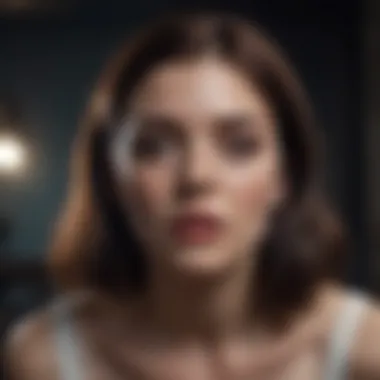
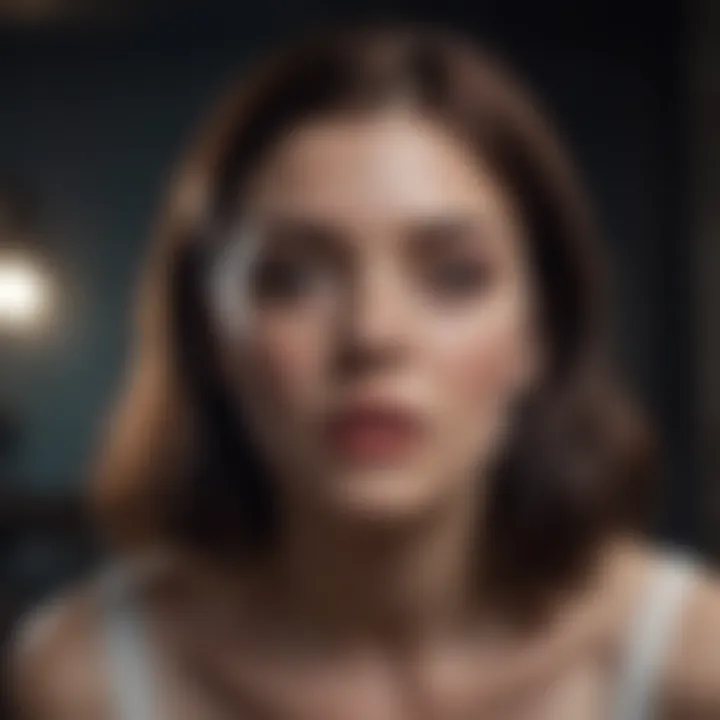
Intro
Horror movies hold a unique position in the realm of cinema. They are not merely films designed to frighten. Instead, they serve as a reflection of societal fears, anxieties, and issues. Understanding the underlying themes in horror allows viewers to engage more deeply with the genre. An exploration of this captivating world can provide insight into our collective psyche and cultural dynamics.
This guide seeks to delve into the various aspects of thrilling horror movies. It will analyze the significance of iconic films from different eras and explore what makes them resonate with audiences.
The discussion will cover important themes and archetypes that recur in horror films, assessing how these elements create a sense of unease. Furthermore, it will examine how horror movies can evoke fear while also critiquing societal norms and values. Through this comprehensive exploration, the goal is to shed light on the artistry and appeal of horror cinema.
Prologue to Horror Cinema
The exploration of horror cinema is crucial to understanding not only the genre itself but also its pervasive influence on culture and society. Horror films tap into deep-seated fears and anxieties, providing a unique lens through which we can examine complex themes such as mortality, the unknown, and societal taboos. These movies have evolved over time, mirroring changes in societal values and fears, making them a rich subject for analysis. The importance of horror cinema lies in its ability to evoke emotional responses and provoke discussions about the human condition.
Defining the Horror Genre
The horror genre is often characterized by its focus on eliciting fear, dread, and discomfort. This emotional engagement is achieved through various narrative techniques and cinematic styles. Elements commonly associated with horror include supernatural beings, psychological tension, and visceral imagery. The genre encompasses a wide range of films, from slasher flicks to psychological thrillers, each offering unique interpretations of fear. Understanding how these elements interplay can deepen one’s appreciation for horror films and their impact on audiences.
The Evolution of Horror Movies
Early Beginnings
Early horror films laid the groundwork for what would become a defining genre in cinema. Beginning in the late 19th century, with silent films like Georges Méliès’ "Le Manoir du Diable," the genre began to captivate audiences with its focus on the supernatural and the macabre. These early works were often experimental and limited by technology, yet they sparked public interest in the genre. The key characteristic of this phase was its novelty, creating a sense of wonder and fear that was relatively fresh. This aspect makes it a beneficial choice for this article, as it provides context for the genre's ongoing evolution.
Moreover, the unique feature of early horror films was their reliance on visual storytelling. The absence of sound led filmmakers to use physicality and imagery to convey horror. While this limitation could be seen as a disadvantage, it also led to innovative techniques that would influence future generations.
Golden Age of Horror
The Golden Age of Horror, spanning the 1930s to the 1960s, marked a significant turning point for the genre. Iconic films like "Dracula," "Frankenstein," and "The Invisible Man" showcased a shift toward more complex narratives and character development. This period also saw the rise of Universal Studios' horror monsters, which became cultural icons. A key characteristic of this era was the blending of horror with science fiction and fantasy elements, creating a richer tapestry for storytelling.
The unique feature of this age was the establishment of horror as a commercially viable genre, attracting widespread audiences and paving the way for future exploration. This is an advantageous aspect to discuss, as it exemplifies how horror can reflect societal fears while also achieving commercial success.
Modern Resurgence
In recent decades, there has been a modern resurgence in horror cinema. This revitalization is characterized by films such as "Get Out," "Hereditary," and "The Conjuring," which have pushed boundaries and explored nuanced themes like social commentary and personal trauma. A key characteristic of this modern wave is its focus on psychological elements and character-driven narratives, rather than relying solely on jump scares.
The unique feature of this resurgence is its ability to blend traditional horror elements with modern social issues. This connection enhances the genre's relevance and can engage a broader audience. Furthermore, discussing this evolution allows an understanding of how horror films continue to adapt, ensuring their place in contemporary cinema.
Psychological Elements of Horror
Understanding the psychological elements of horror is essential to grasp the genre's profound impact on audiences. This segment examines how horror films tap into the human psyche, manipulating emotions and producing reactions that linger long after viewing. The psychological elements create an engaging experience, allowing for a deeper examination of fear beyond mere screams. They provoke thought and invite personal reflections on the nature of fear itself.
Fear and Its Mechanisms
Fear is a fundamental emotion that drives human behavior. In horror cinema, fear acts as a catalyst for engagement. Its mechanisms can be categorized into two primary forms: innate and learned fears. Innate fears are biological responses, such as fear of darkness or sudden loud noises. Conversely, learned fears stem from personal experiences or societal influences, reflecting issues like violence or the unknown.
Films often exploit these fears. Classic examples include "Psycho," where fear of the unseen takes center stage, and "The Exorcist," which plays on spiritual fears. This manipulation creates suspense as viewers anticipate potential threats within the storyline.
Key Mechanisms to Consider:
- Physiological Response: Horror films frequently trigger adrenaline responses, conveying a sense of urgency and survival.
- Psychological Response: The fear of losing control, the unknown, and the vulnerability of humanity can heighten emotional tension.
In this way, horror films serve as a mirror reflecting our fears, helping audiences navigate their emotional landscapes.
Suspense versus Surprise
Suspense and surprise are two crucial components of horror that interact yet serve distinct functions. Suspense builds a slow-burning tension. It engages viewers over time, making them uncertain about outcomes. This approach ensures they remain engrossed in the narrative. A prime example of this is "The Shining," where anticipation heightens as the psychological state of Jack Torrance deteriorates.
On the other hand, surprise delivers immediate emotional impact. Sudden events, like unexpected deaths or revelations, shock the audience. Films such as "Scream" effectively utilize this to keep viewers on their toes, feeding into the unpredictability of horror.
Important Distinctions:
- Suspense: Establishes ongoing tension, leading to emotional investment.
- Surprise: Moments of shock, providing instant gratification or a jolt of fear.
Both elements are essential for crafting engaging horror narratives. When blended skillfully, they create a dynamic that resonates strongly with viewers, leaving a lasting impression that is hard to shake off.
"Horror films offer not just fear, but a profound look at what it means to be human, exploring its depths through suspense and surprise."
Noteworthy Themes in Horror Movies
Horror cinema often encapsulates deep themes that resonate with audiences on multiple levels. These thematic elements serve to heighten emotional responses and provide varied layers of interpretation. Understanding these themes enhances our appreciation of horror films, making each viewing experience rich and complex. The exploration of isolation, the subversion of normalcy, and cultural reflections represents integral components of horror storytelling.
Isolation and Alienation
Isolation is a recurring theme in many horror films. Characters often find themselves cut off from the outside world. This physical or emotional separation increases their vulnerability. For example, movies like The Shining showcase characters in remoteness, heightening feelings of anxiety and fear. The settings in these films also reinforce a sense of alienation. The characters struggle against their circumstances, leading to psychological breakdowns.
Furthermore, the theme of alienation often parallels the human experience. Viewers may relate to the feelings of being misunderstood or alone, making the horror feel more personal. This connection reveals the psychological aspects of the dreads portrayed in these films. It highlights how horror reflects our own fears of isolation in society.
The Subversion of Normalcy
Another prominent theme is the subversion of normalcy. Horror films frequently disrupt the mundane and challenge audience expectations. They present scenarios that deviate from everyday life, such as Get Out, where innocent situations reveal dark truths. This disruption creates tension, keeping audiences on edge.
By undermining typical behavior or events, these films make viewers question their surroundings. What seems normal can quickly turn to terror. This theme often serves as an allegory for real-life issues, such as societal norms or cultural acceptance. The violation of what is familiar encourages audiences to confront uncomfortable realities.
Cultural Reflections in Horror
Horror films often reflect cultural anxieties and societal issues. The themes explored in these films provide insights into the collective fears of their times. For instance, films like Night of the Living Dead were not merely about zombies; they embodied socio-political tensions relevant to the era. These cultural reflections allow viewers to engage with broader discussions about identity, race, and power.
Additionally, horror can act as a critique of societal norms. This thematic exploration offers commentary on gender roles, consumption, and other key societal themes. The ability of horror to address these issues enhances its enduring appeal. It allows viewers, particularly women, to engage with the narratives and challenge traditional views.
"Horror is not about the monsters; it’s about the truths they reveal."
In summary, noteworthy themes in horror movies facilitate a deeper understanding of the genre. By examining isolation, the subversion of normalcy, and cultural reflections, audiences can appreciate the layered narratives. It is this thematic complexity that contributes to the thrill and lasting impact of horror cinema.
Character Archetypes in Horror Films
Character archetypes play a pivotal role in shaping the narratives of horror films. They serve as vessels through which fundamental fears and societal issues are explored. Each archetype embodies specific traits and behaviors that resonate with audiences. This familiarity helps create a bridge between the viewer's experiences and the extreme situations depicted on screen. Understanding these archetypes enriches one's appreciation of horror movies and allows for deeper critical analysis.
The Final Girl Trope
The Final Girl trope is among the most significant archetypes in horror cinema. Typically, this character is the sole survivor who confronts the antagonist, often embodying purity and resourcefulness. She stands in stark contrast to her peers, who may engage in reckless behavior. Notable examples include Laurie Strode from Halloween and Sally Hardesty from The Texas Chainsaw Massacre.
This trope often reflects societal themes, particularly the dichotomy between innocence and moral complexity. The Final Girl's journey often involves a transformation, where she evolves from a state of vulnerability to one of strength. This shift resonates with audiences, as they are drawn into her plight. By challenging the status quo, she often becomes a symbol of resilience and empowerment.
The Antagonist: Monsters and Madmen
Antagonists in horror films can be divided into two main categories: supernatural creatures and human killers. Monsters like Freddy Krueger from A Nightmare on Elm Street or Michael Myers from Halloween embody primal fears of the unknown. They often challenge the idea of safety within our own spaces. The classic madman, however, presents a radically different threat. Characters like Norman Bates from Psycho showcase the terror found within humanity itself. This blend allows horror films to tap into both physical and psychological fear.
Moreover, these antagonists often reflect societal anxieties. They can be viewed as manifestations of collective fears, ranging from societal breakdown to personal death. The complexity of their motivations adds depth to horror narratives. The audience is not just experiencing terror but is also invited to ponder the underlying issues the characters represent.
Supporting Roles in Horror
Supporting characters in horror films add crucial layers to the story. They can enhance the character development of the protagonists and offer contrasting perspectives to the main narrative. Friends, family, or even authority figures serve significant purposes. They can bring additional tension by making questionable decisions or failing to recognize the danger.
For instance, characters like Nancy's friends in A Nightmare on Elm Street allow the narrative to explore themes of trust and betrayal. Their fate often serves as a cautionary tale about the consequences of ignorance or denial. Additionally, these characters can often provoke sympathy or disapproval from the audience, strengthening the emotional response during key moments.
In summary, understanding character archetypes enriches the horror movie experience. Each archetype enhances thematic depth and engages viewers more profoundly with the narrative. By analyzing these roles, audiences can appreciate horror films not only as entertainment but as reflections of deeper societal insights.
Cinematographic Techniques in Horror
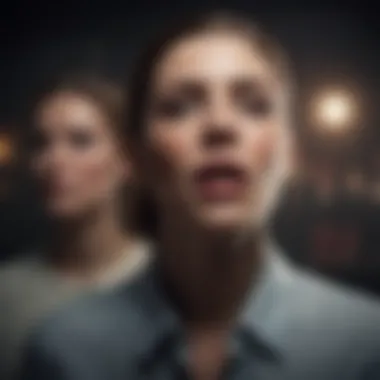
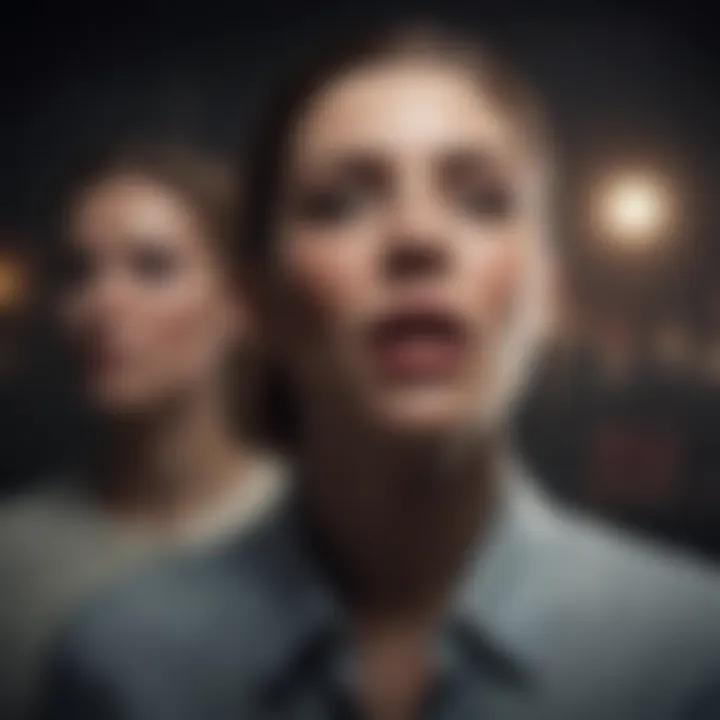
Cinematographic techniques play a crucial role in the horror genre, as they help to evoke the emotions and reactions that audiences expect from such films. These techniques are not mere enhancements; they are integral to the storytelling process. The visual and auditory elements work together to create an atmosphere that can heighten tension and evoke fear. From camera angles to sound design, each component adds layers of complexity to how viewers perceive and experience horror.
Sound Design and Its Effects
Sound design in horror films is one of the most impactful elements that contributes to the overall sense of dread. The absence or presence of sound can create a profound effect on the viewer's emotional state. Sounds can range from eerie silence to sudden loud noises that make the audience jump.
- Creating Tension: Subtle sound effects can build anticipation. For instance, low rumblings or whispers can indicate the presence of something menacing without showing it directly. This technique plays on the viewer's imagination, which often leads to a greater sense of fear than explicit visuals.
- Diegetic versus Non-Diegetic Sounds: Understanding the difference between sounds that originate within the film's world (diegetic) and those that do not (non-diegetic) is important. Non-diegetic music often signals emotional cues, guiding the audience’s responses. In many horror films, composers like John Carpenter have effectively used non-diegetic sound to create memorable scores that haunt the viewers long after the credits roll.
- Dynamic Range: The effective use of dynamic range in sound design amplifies shock moments. The sudden amplifying of otherwise quiet sounds can trigger an instinctual response from the audience, making them feel threatened or startled.
Lighting and Atmosphere
Lighting techniques are vital in constructing the atmosphere in horror films. Through strategic use of light and shadow, filmmakers manipulate how scenes are perceived, guiding the audience’s emotions and reactions.
- Low Key Lighting: Many horror films employ low-key lighting to create shadows and obscure visibility. This technique keeps audiences on edge, as they can't fully assess the dangers in the frame. Movies like "The Witch" utilize this to great effect, enhancing the oppressive atmosphere.
- Color Palettes: The choice of color plays a key role as well. Dark tones may evoke feelings of despair or danger, while harsher lighting can be jarring, pushing the tension even higher. Colors can work in tandem with sound to layer the narrative in more profound ways.
- Practical Effects: Often, lighting is paired with practical effects to create a tangible sense of fear. Shadows may suggest movement or create unexpected shapes, enhancing suspense. The clever utilization of these techniques can resonate with the audience, adding depth to predictably dangerous moments.
Notable Point: In horror cinema, the right blend of sound and lighting has the power to transform ordinary scenes into deeply unsettling experiences.
In sum, understanding these cinematographic techniques enriches the horror-watching experience. They are not just gimmicks but essential narrative tools that provoke fear and fulfill the audience's desire for thrill. Their importance cannot be overstated; through their careful application, filmmakers create films that remain etched in our memories.
The Role of Sound in Creating Fear
Sound is a critical element in the horror genre, capable of inducing fear and shaping the overall viewing experience. The combination of auditory cues, musical scores, and silence enhances the emotional intensity of a film. It creates an atmosphere that engages audiences on a psychological level, making them more susceptible to the film's frightful moments. The use of sound establishes context, builds suspense, and often serves as a haunting reminder of the unseen dangers that lurk in horror narratives.
Musical Scores in Horror Movies
Musical scores are often the backbone of horror films. Composed to evoke specific feelings, scores create an environment that heightens anxiety and fear. Composers like John Carpenter and Bernard Herrmann have demonstrated how a simple melody can become synonymous with terror. For instance, Carpenter’s iconic Halloween theme is both minimalistic and haunting, capturing the essence of impending doom.
- Establishes Mood: The music in horror films sets the tone. Whether it's a slow, foreboding melody or frantic strings, each choice contributes significantly to the viewer's emotional state.
- Enhances Suspense: A rising score can lead audiences toward a climax, building tension just before a scare. The sudden shift from tense quietness to a booming crescendo can create a shocking effect.
- Psychological Impact: Scores can linger with viewers long after the film ends, instilling a sense of fear that persists. The emotional connection established through music allows audiences to relive their fear when they hear the score again.
Silence as a Tool
Silence plays a profound role in horror cinema. It is often used to amplify tension and manipulate viewers' expectations. In such moments, the absence of sound can be as effective—if not more so—than a loud jump scare. The juxtaposition of silence against an otherwise noisy backdrop forces audiences to confront their own fears. Silence creates a vacuum of uncertainty. It gives audiences time to anticipate what might happen next. This anticipation can be more terrifying than the event itself.
"The absence of sound can be more haunting than the loudest scream."
Moreover, silence can evoke a sense of isolation, mirroring the situations faced by characters. The quieter the environment, the more intense the feeling of dread becomes, pushing viewers deeper into the narrative.
Analysis of Iconic Horror Films
The realm of horror cinema can be perceived as a vast landscape dotted with films that have significantly influenced both the genre and cultural discourse. Analyzing these iconic horror films is essential for understanding not only the evolution of cinematic techniques but also the societal undercurrents they often reflect. This section dives into the key films that have left a lasting impact on the genre, as well as the directors who have shaped horror storytelling. Through this exploration, one can appreciate how these works resonate with audiences and offer critical commentary on various issues.
Key Films and Their Impact
Iconic horror films often serve as touchpoints for cultural discussions and reflections of societal anxieties. Consider classics like Alfred Hitchcock's Psycho, which challenged audience perceptions of morality and safety. Released in 1960, this film redefined horror by introducing the psychological thriller element, forcing viewers to confront their fears in a more intimate setting. The shower scene has since become one of the most analyzed moments in cinema history.
Similarly, George A. Romero's Night of the Living Dead, launched in 1968, broke new ground in the genre with its portrayal of zombies as a reflection of societal breakdown and racial tensions. This film did not just entertain; it provoked thought and discussion about humanity itself.
More contemporary examples include Get Out by Jordan Peele. Released in 2017, it not only scares but also serves as a sharp critique of race relations in America. Peele's film highlights the ability of horror to act as a mirror reflecting the cultural zeitgeist, making it an important piece in the ongoing dialogue about race and identity.
Other notable films include The Exorcist, which raised issues of faith and skepticism, and Hereditary, which explores familial trauma and grief. Each of these films brings something unique to the table, driving deeper conversations about the human experience.
Directors Who Shaped the Genre
The influence of directors in horror is profound and multifaceted. Figures such as Alfred Hitchcock laid down the groundwork for suspense and psychological horror, while filmmakers like John Carpenter with Halloween redefined the slasher genre and established enduring tropes.
Wes Craven's A Nightmare on Elm Street introduced Freddy Krueger, a nightmarish figure that blurred the lines between dreams and reality. Craven's ability to evoke fear in such a familiar space has left a durable mark on horror.
Moreover, directors like Dario Argento and Tobe Hooper pushed boundaries within the Italian and American horror landscapes, respectively. Argento's Suspiria is celebrated for its stylistic storytelling and haunting score, while Hooper's The Texas Chain Saw Massacre stands as a raw depiction of fear that still resonates today.
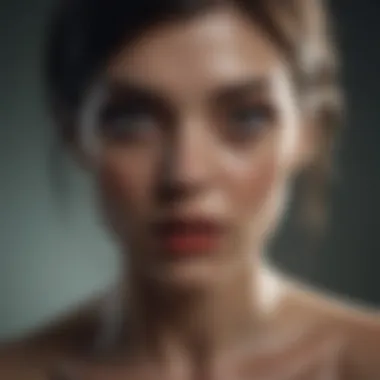

In recent years, Jordan Peele has emerged as a pivotal voice in horror, combining traditional scares with rich thematic content. His work illustrates the genre's capacity to address societal issues while still delivering an engaging narrative.
"The history of horror films showcases a dialogue with society, mirroring our deepest fears and most pressing concerns."
This analysis of iconic horror films and their directors illuminates how cinema serves not only to entertain but also to provoke thought and inspire discussions about our culture. Through their unique lenses and stylistic choices, these filmmakers contribute significantly to the continuation of horror as a vital art form.
The Intersection of Horror and Society
Horror films often serve as a reflection of societal fears, norms, and values. This intersection between horror and society is crucial in understanding how these films resonate with audiences on multiple levels. The horror genre's ability to mirror social anxieties allows it to remain relevant across different cultural and temporal contexts. By exploring this dimension, we uncover the deeper meanings behind the visceral experiences horror offers.
Horror as Social Commentary
Horror has a long-standing tradition of acting as social critique. Filmmakers often use horror elements to discuss complex issues such as race, gender, class, and sexuality. For instance, movies like Get Out provide incisive commentary on racism, while The Babadook touches upon mental health and motherhood. In these instances, the horror tropes do not merely serve to frighten; they encourage viewers to confront uncomfortable truths. The tension and terror faced by characters can symbolize broader societal problems, making the horror genre an effective vehicle for commentary.
The effectiveness of horror as social commentary can be observed through its evolution. Earlier films often dealt with themes of isolation and the supernatural. However, contemporary horror has shifted towards narratives that explore real-world issues. This transition reflects an audience that is increasingly aware of societal complexities and seeks more than just entertainment from horror films.
Audiences and Their Response
Audience reactions to horror are diverse and multifaceted. The societal context in which a horror film is released often influences its reception. For example, during times of political or social unrest, horror films tend to emphasize themes that resonate with collective anxiety. During the Cold War, for instance, films like Invasion of the Body Snatchers expressed fears of conformity and loss of individuality.
Moreover, horror films generate varied responses among different audience demographics. Women, for instance, may have a different interpretation of horror films compared to male viewers. Studies show that women often connect more with films that explore female perspectives and experience. Hence, this gender-based response to horror can lead to discussions about the roles and representations of women in the genre.
"Horror is not just about monsters; it’s about societal monsters that we face every day."
Future Trends in Horror Cinema
The landscape of horror cinema continues to evolve significantly. The importance of this section lies in understanding how emerging trends reflect the changing dynamics of both technology and audience engagement. As creators explore new avenues to elicit fear and tension, these developments shape what horror means in contemporary society. This exploration not only provides insight into audience preferences but also reveals the potential future direction of horror as a genre.
Technological Advancements
Technological advancements have drastically changed how horror films are created and viewed. One of the notable innovations is the use of virtual reality (VR). This technology offers an immersive experience unlike traditional cinema. Viewers are not just spectators; they step into terrifying scenarios. Companies like Oculus are pioneering narrative experiences that immerse users in horror situations, resulting in a unique form of engagement.
Moreover, advancements in special effects have raised the bar for visual storytelling. Films such as "A Quiet Place" effectively utilize sound design and visual effects to heighten tension. With the help of CGI, filmmakers can create monsters, environments, and scenarios that were previously impossible.
Additionally, streaming platforms such as Netflix and Hulu have influenced distribution. The rise of these platforms allows for a wider variety of horror films to reach audiences, including international and independent projects. More niche categories are now accessible, increasing diversity within the genre.
Changing Audience Expectations
With the rapid evolution of the horror genre, audience expectations have shifted considerably. Today’s viewers seek complexities within narratives that challenge typical tropes. They desire stories that don't just scare but provoke thought.
For instance, films like "Get Out" and "Hereditary" present deeper societal dilemmas and personal traumas alongside traditional horror elements. This dual focus engages audiences on multiple levels, making them reflect on the larger themes presented.
Furthermore, inclusivity and representation are critical considerations in new horror films. Modern audiences are increasingly supportive of diverse narratives. Consequently, filmmakers are recognizing this shift and strive to create stories that are more reflective of varied backgrounds and experiences.
In essence, the future of horror lies in its ability to innovate while remaining relevant to societal issues and audience beliefs.
In summary, as technology shapes the methods of storytelling and audience expectations evolve, the horror genre enters a transformative phase. It becomes important for creators to adapt and respond to these trends, thereby contributing to the continually evolving narrative landscape of horror cinema.
Ending: The Enduring Allure of Horror
Horror cinema has established a unique place in the cultural landscape, attracting diverse audiences while engaging them with profound thematic narratives. The appeal lies not just in the visceral reactions elicited by jumps and scares, but in the deeper layers that rather reveal the intricacies of fear and human psyche.
The examination of horror films throughout this article highlights several critical components. First, horror serves as a means of exploring societal fears and anxieties. Historically, horror movies reflect the concerns of their times, whether it be the fear of the unknown, the otherness, or even modern existential dread. By engaging with these themes, audiences can grapple with their own trepidations in a safe environment.
Additionally, the structure and techniques utilized in horror films, such as sound design and cinematography, enhance the experience. These elements not only contribute to the suspense but also create an immersive atmosphere that draws viewers deeper into the narrative world. The emotional engagement achieved through sound and visuals becomes a shared experience; it fosters a community among viewers who share their reactions and interpretations.
Here are some key points to consider about horror films:
- Cultural Significant: Horror films often critique and reflect social issues, revealing truths that may be uncomfortable yet necessary for discussion.
- Personal Reflection: Many viewers find that horror allows them to confront their own fears, an opportunity for catharsis.
- Sustained Interest: With evolving technology and changing tastes, horror continues to adapt, ensuring its relevance in contemporary cinema.
In summary, the enduring nature of horror cinema lies in its ability to invoke fear while also encouraging reflection on deeper social and psychological themes. As viewers, we are not just seeking entertainment; we are engaging in a dialogue about what scares us, what fascinates us, and perhaps even what unites us in our shared humanity.
"Horror is not just a genre but a lens through which we explore the darkest corners of our existence."
This article aims to illuminate the many facets of horror while reinforcing its significance in modern storytelling. As the genre continues to evolve, its capacity to reflect and provoke thought positions horror as an essential part of cinematic expression that resonates deeply with audiences of all ages.



